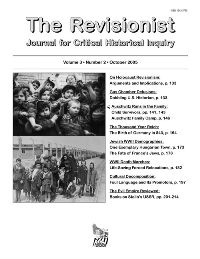What is the Real Racial/Ethnic Agenda of the ADL?
The Anti-Defamation League of B’nai B’rith (ADL) is probably well known to most readers of The Revisionist. This New York-based, tax-exempt Jewish-Zionist religious organization with affiliates in forty-two countries claims to be one of the premier civil rights organizations in the world, and allegedly, dedicated to ending discrimination and securing equal rights for all.[1] Undoubtedly,…

